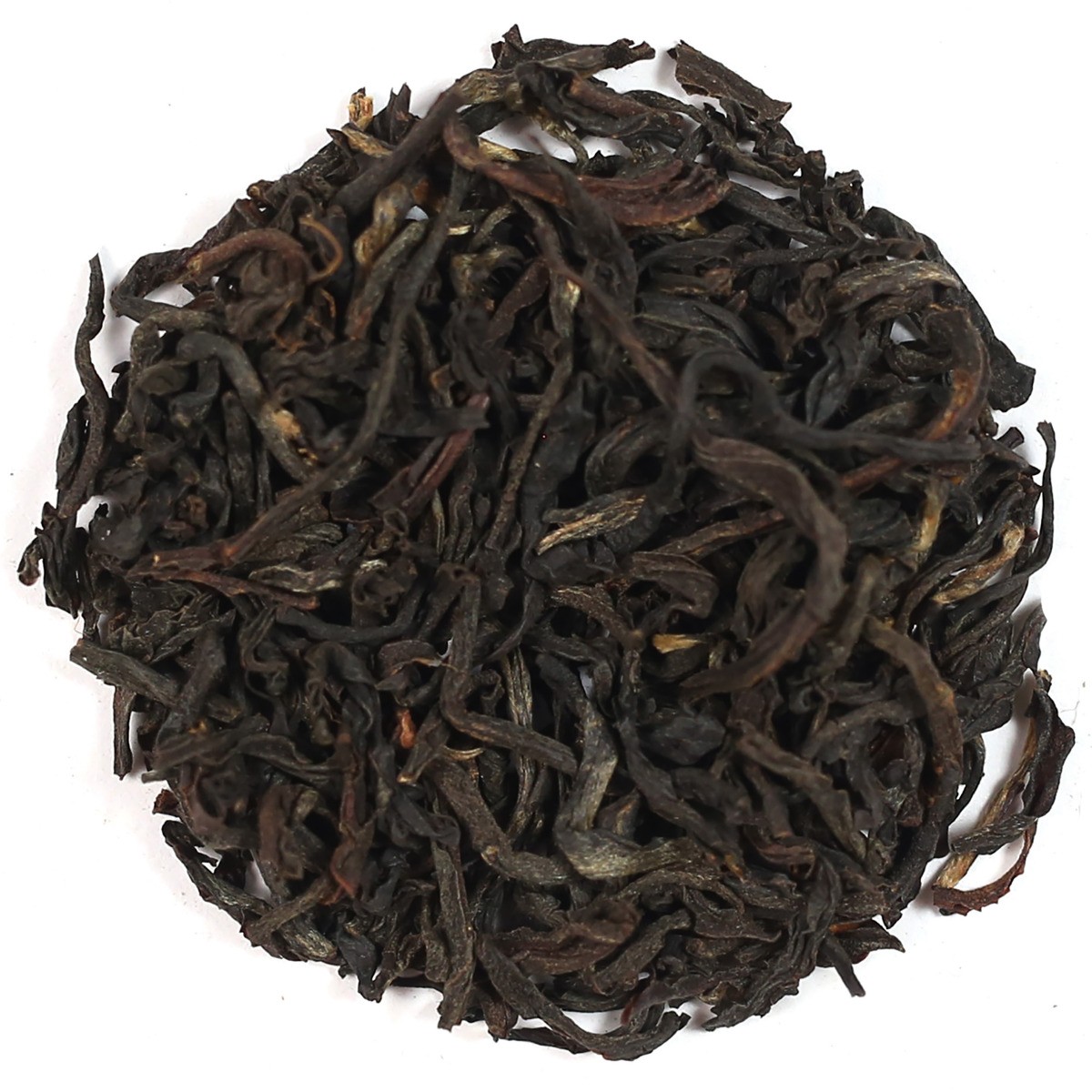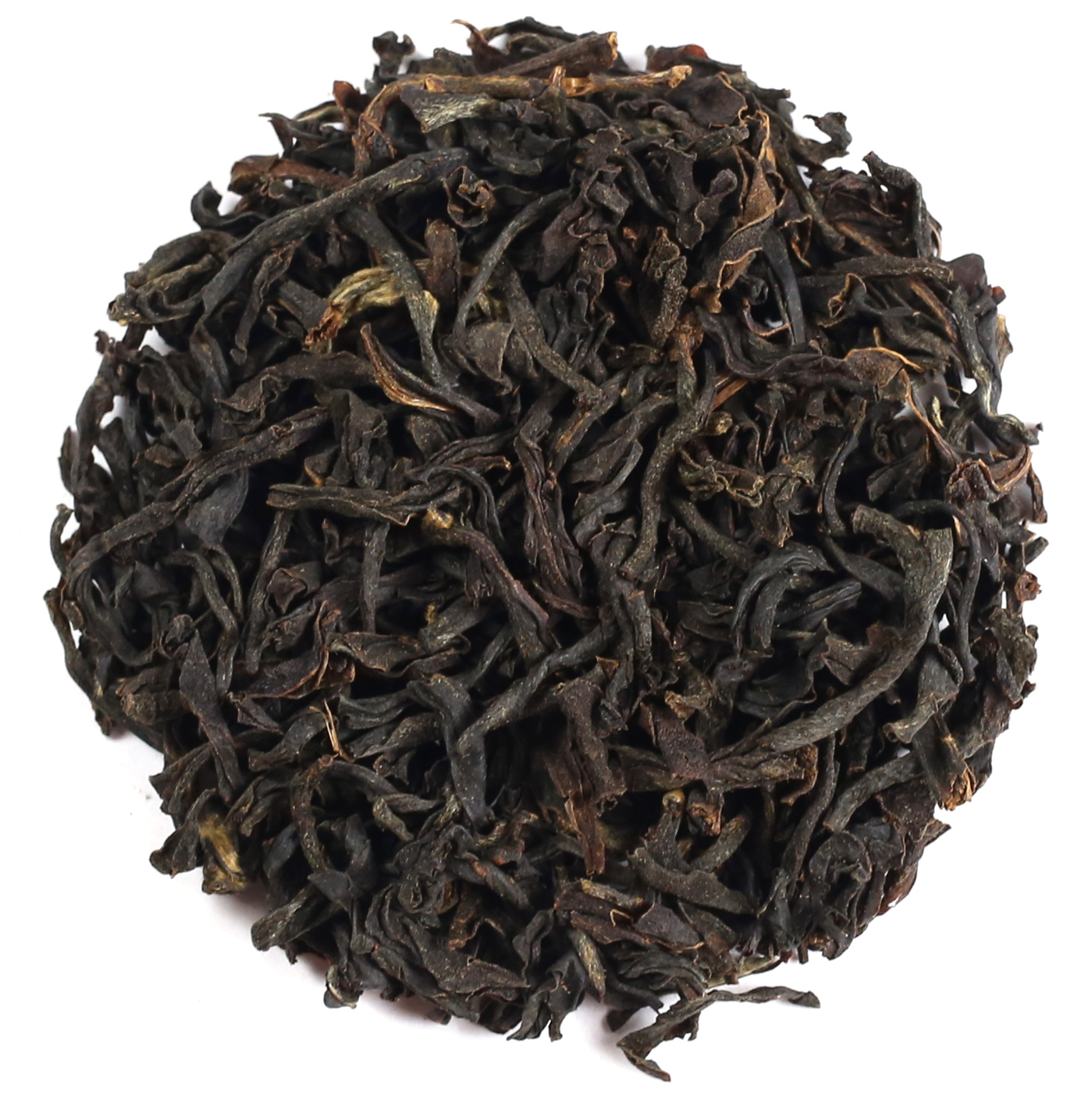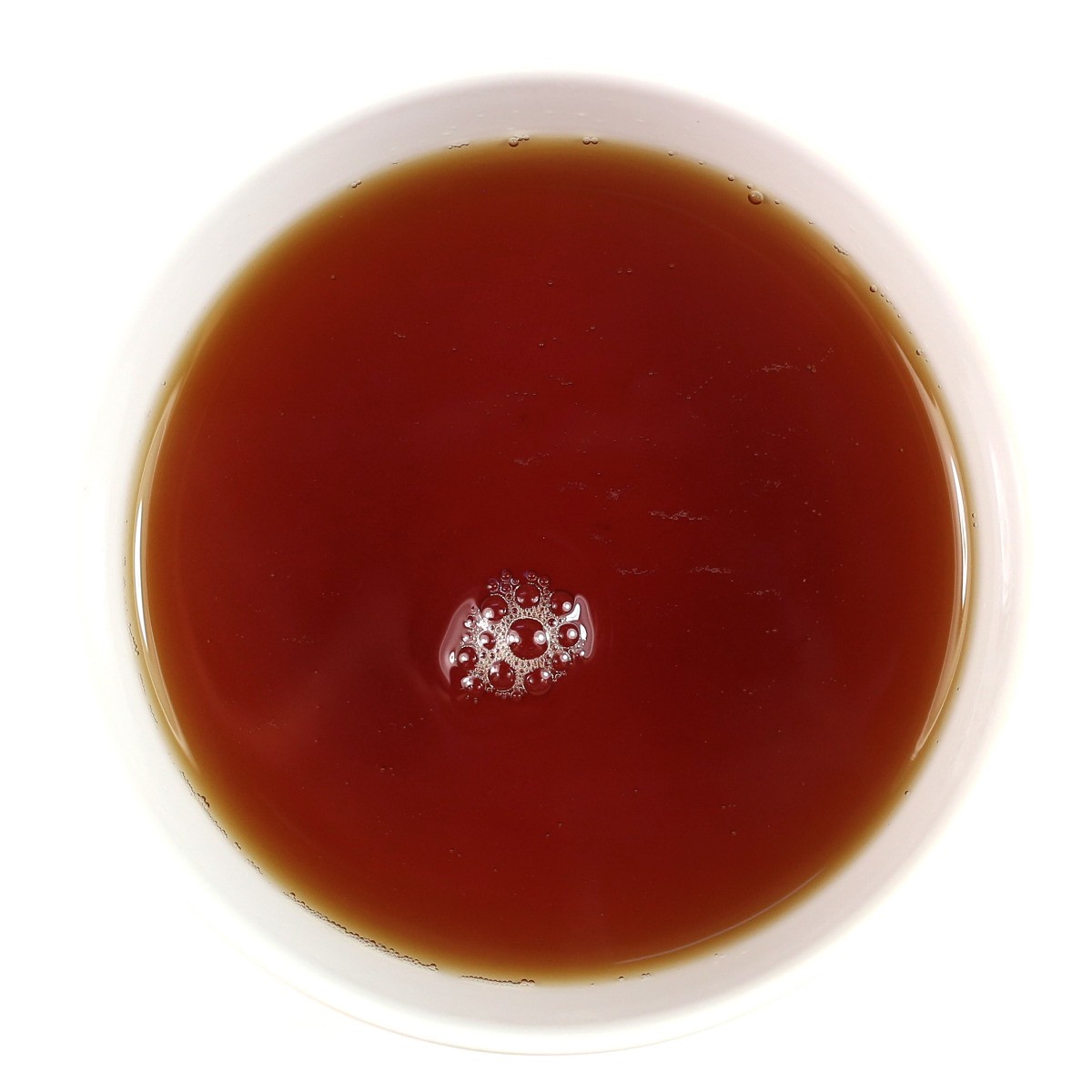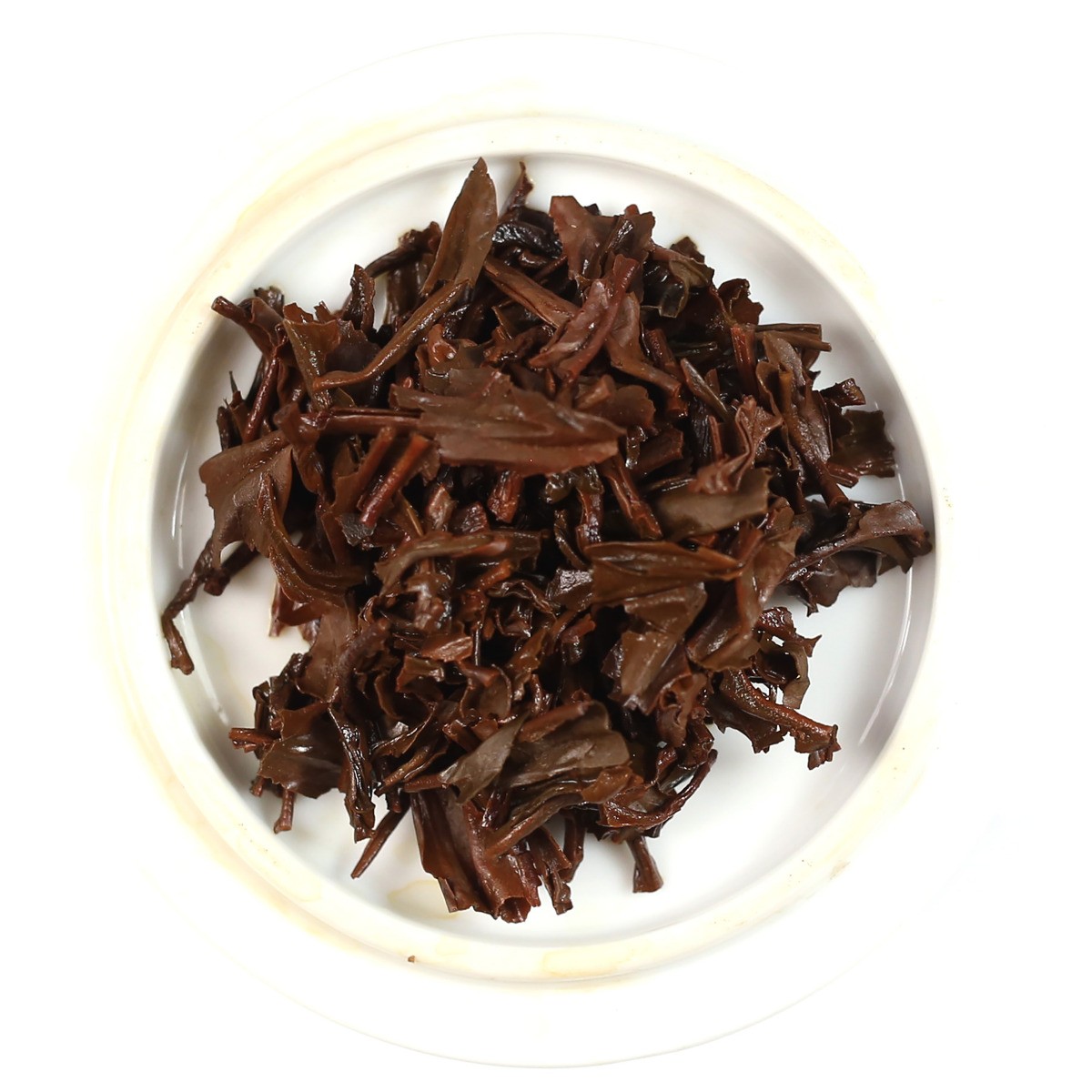Black Tea Brewing Guide

1 Teaspoon
Add 1 teaspoon per person and one for the pot.

95⁰c - 100⁰c
Boil using fresh water, at a temperature of 95⁰ - 100⁰c.

3 - 5 Mins
Steep for 3-5 minutes, depending on personal preference
About Product
-
Product Description
The Samdang Assam Tea estate is situated in the Tinsukia district of Assam. Consisting of approximately 913 hectares of tea-growing gardens, and found near the southern bank of the Brahmaputra river.
This estate produces some of the most classically ‘Assamese’ flavours of the entire region. Its annual crop is estimated at around 1,600 tonnes, with our Assam Samdang Tea since becoming a choice brew among many of our lovely customers!
A delightful combination of smooth malty flavours with earthy, slightly bitter undertones, this delectable beverage brings the spirit of Assam to your morning cup!
About Assam Tea in India
The story of Indian tea, as a whole, begins in the district of Assam, almost 200 years ago! In fact, in 1823, it was in the hills near Rangpur (present-day Sivasagar) that Scottish adventurer and merchant, Robert Bruce, first discovered the Camellia Sinensis var.
Assamica plant growing in abundance. A cousin of the Camellia Sinensis var Sinensis plant from China, Robert would go on to clarify his findings with the Singpho tribes of the region. They would, in turn, gift him with leaves from these tea plants as a gesture of goodwill.
Now with specimens in his possession, Robert sent the leaves to his brother, C.A. Bruce, in Calcutta, for further examination. The studies that followed were able to scientifically confirm Robert Bruce’s discovery, and so Indian Tea was officially born! Some years after, the district of Assam would be home to the very first Tea company catered to Indian tea.
Established as ‘The Assam Tea Company’, its headquarters were located in the town of Nazira – where it is still functioning today! Sadly, however, Robert Bruce would never fully see the fruits of his labour. His death would follow the year after his discovery, but his legacy would bring about a new age within the tea industry.
Once Assam Tea Estates Where Established
By 1862, the entire Assam Tea industry consisted of 160 gardens, owned by five public companies, and 57 private companies. Less than 100 years later, however, a massive change within the industry was brought about by the Indian Independence movement.
By 1947, many of these companies would change from British hands to Indian hands. This was not without its difficulties, as soon after the transition period, unprecedented political upheaval decimated the Assamese economy. For the next 70 years, the district of Assam was subjected to lengthy periods of instability, with many tea gardens abandoned due to uncertain conditions.
Despite this, Assam Tea has developed from its humble beginnings to become a giant within the global market. It has maintained its good name and continues to produce some of the most popular black teas of the entire world.
Type of Tea: Loose Leaf Black Orthodox Tea. Grade: TGFOP – Tippy Golden Flowery Orange Pekoe
Useful Information
Origin: The Samdang Tea Estate, Assam.
Brewing Instructions: Brew using freshly boiled water and infuse for 3 to 5 minutes.
How to Serve: Milk, sugar, honey or lemon – the choice is yours with this luxurious brew! If you prefer to keep things simple, however, this black tea is equally delicious served as it is.
Tasting Notes: Assam Samdang Tea consists of smooth, sweet flavours combined with the classic maltiness expected of most Assam brews. When consumed without any additions, you may find a slightly bitter aftertaste massaging your palate.
Colour in Cup: Golden liquor, light in tone.Health Benefits of Assam Samdang Tea TGFOP
All types of Assam tea are known to provide countless health benefits when consumed as part of a healthy and active lifestyle. These include improved mental alertness, improved oral and cardiovascular health, improved weight management and even improved immune system health!
-
Delivery Information
We offer reliable delivery services through Royal Mail to ensure that your orders reach you on time.
Here are the main points you should be aware of:
- Standard UK Delivery: £3.95 excluding delivery charge.
- Delivery Times: Orders are processed and dispatched within 2-5 working days but they may take longer during busy times. It is worth noting that all our orders are packed by hand in order to maintain the quality.
- Free Delivery: We are delighted to provide free shipping for UK orders over £35*. Moreover, customers from Europe can enjoy free shipping for any purchase above €75*. Furthermore, we offer free delivery in the USA for all purchases exceeding $125*. Please note terms and conditions may apply.
- Tracking: When your package is sent you will receive a tracking number via email so as to keep tabs of its progress.
International Shipping
We do ship worldwide meaning our products can be accessed by anyone around the world.
Here are some important details:
- Delivery Times: International deliveries vary based on destination, generally taking between 7-14 working days.
- Shipping Costs: International shipping costs are calculated at checkout based on your location and weight of your order. View full delivery charges for your location.
- Customs and Import Duties: Remember customs or import duties may exist depending on regulations in your country; these charges are borne by the customer.
Returns Policy
Your satisfaction is our top priority, however if for any reasons you’re not completely happy with your purchase, simply follow our returns procedure:
- Eligibility: Items returned within 30 days of receipt must remain unopened and in their original condition.
- Process: In order to return an item contact our customer service department using your unique order number after which detailed instructions will be given concerning returning them back to us securely.
- Refunds: Our aim is to refund you within 5-7 working days upon successful reception of returned goods. The refund amount will be credited to your original payment method.
For any other Enquiries or help please contact our Customer Support Team always at your service.
-
Product Reviews

 Loose Leaf Tea
Loose Leaf Tea Pyramids
Pyramids Tea Bags
Tea Bags Africa
Africa Assam
Assam Ceylon
Ceylon Chinese
Chinese Darjeeling
Darjeeling European
European Indian
Indian Japan
Japan Nepal
Nepal South East Asia
South East Asia Ayurveda Tea
Ayurveda Tea Black Tea
Black Tea Chai Tea
Chai Tea Flowering Tea
Flowering Tea Fruit Tisanes
Fruit Tisanes Green Tea
Green Tea Herbal Tea
Herbal Tea Matcha Tea
Matcha Tea Oolong Tea
Oolong Tea Organic Tea
Organic Tea Pu erh Tea
Pu erh Tea Rooibos Tea
Rooibos Tea White Tea
White Tea Asian Coffee
Asian Coffee Caribbean Coffee
Caribbean Coffee Central American Coffee
Central American Coffee South American Coffee
South American Coffee Coffee Blends
Coffee Blends Decaffeinated Coffee
Decaffeinated Coffee Espresso Coffee
Espresso Coffee Ethically Sourced Coffee
Ethically Sourced Coffee Flavoured Coffee
Flavoured Coffee Organic Coffee
Organic Coffee Single Origin Coffee
Single Origin Coffee Chocolate 1
Chocolate 1 Chocolate 2
Chocolate 2 Chocolate 3
Chocolate 3 Chocolate 4
Chocolate 4 Chocolate 5
Chocolate 5 Chocolate 6
Chocolate 6 Chocolate 7
Chocolate 7 Chocolate 8
Chocolate 8 Chocolate 9
Chocolate 9 Loose Tea Filters
Loose Tea Filters Tea Accessories
Tea Accessories Tea Bricks
Tea Bricks Tea Caddies
Tea Caddies Tea Caddy Spoons
Tea Caddy Spoons Tea Gift Ideas
Tea Gift Ideas Tea Infusers
Tea Infusers Tea Strainers
Tea Strainers





